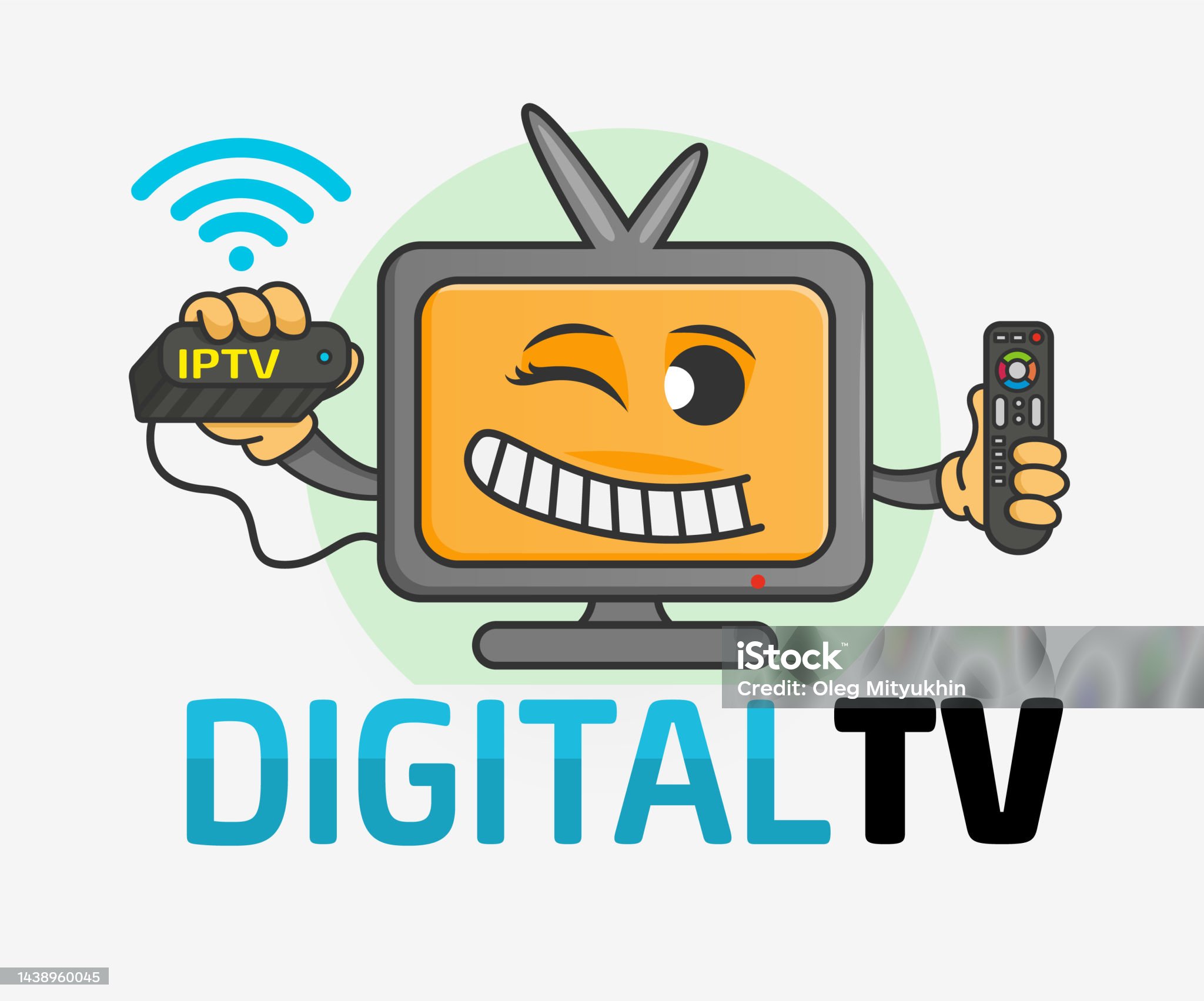How 5G is Revolutionizing IPTV in the United States and UK
How 5G is Revolutionizing IPTV in the United States and UK
Blog Article
1.Overview of IPTV

IPTV, or Internet Protocol Television, is gaining increasing influence within the media industry. In stark contrast to traditional cable and satellite TV services that use tv listings uk freeview costly and largely exclusive broadcasting technologies, IPTV is streamed over broadband networks by using the same Internet Protocol (IP) that serves millions of personal computers on the modern Internet. The concept that the same shift towards on-demand services is forthcoming for the multiscreen world of TV viewing has already grabbed the attention of various interested parties in the technology convergence and potential upside.
Consumers have now embraced watching TV programs and other video content in varied environments and on multiple platforms such as cell or mobile telephones, desktops, laptops, PDAs, and additional tools, in addition to traditional TV sets. IPTV is still in its infancy as a service. It is growing, however, by leaps and bounds, and various business models are emerging that are likely to sustain its progress.
Some believe that economical content creation will likely be the first content production category to reach the small screen and capitalize on niche markets. Operating on the economic aspect of the TV broadcasting pipeline, the current state of IPTV hosting and services, on the other hand, has several notable strengths over its rival broadcast technologies. They include crystal-clear visuals, on-demand viewing, DVR functionality, audio integration, web content, and instant professional customer support via alternative communication channels such as cell phones, PDAs, global communication devices, etc.
For IPTV hosting to work efficiently, however, the internet gateway, the core switch, and the IPTV server consisting of media encoders and server hardware configurations have to interoperate properly. Dozens regional and national hosting facilities must be fully redundant or else the stream quality falters, shows seem to get lost and are not saved, interactive features cease, the picture on the TV screen is lost, the sound becomes choppy, and the shows and services will malfunction.
This text will address the competitive environment for IPTV services in the U.K. and the U.S.. Through such a side-by-side examination, a range of key regulatory themes across multiple focus areas can be uncovered.
2.Legal and Policy Structures in the UK and US Media Sectors

According to jurisprudence and corresponding theoretical debates, the regulatory strategy adopted and the policy specifics depend on how the market is perceived. The regulation of media involves competition policy, media ownership and control, consumer safeguarding, and the protection of vulnerable groups.
Therefore, if we want to regulate the markets, we have to understand what defines the media market landscape. Whether it is about ownership restrictions, market competition assessments, consumer safeguards, or children’s related media, the governing body has to understand these sectors; which content markets are growing at a fast pace, where we have market rivalry, vertical consolidation, and ownership overlaps, and which media markets are struggling competitively and suitable for fresh tactics of key participants.
To summarize, the landscape of these media markets has always evolved to become more fluid, and only if we reflect on the policymakers can we predict future developments.
The growth of IPTV across regions normalizes us to its dissemination. By combining traditional television offerings with cutting-edge services such as interactive digital features, IPTV has the potential to be a crucial factor in enhancing rural appeal. If so, will this be enough to prompt regulatory adjustments?
We have no proof that IPTV has an additional appeal to non-subscribers of cable or satellite services. However, certain ongoing trends have slowed down IPTV's growth – and it is these developments that have led to reduced growth expectations for IPTV.
Meanwhile, the UK implemented a lenient regulatory approach and a engaged dialogue with market players.
3.Market Leaders and Distribution

In the United Kingdom, BT is the leading company in the UK IPTV market with a 1.18% market share, and YouView has a market share of 2.8%, which is the scenario of single and two-service bundles. BT is usually the leader in the UK according to market data, although it fluctuates slightly over time across the range of 7 to 9%.
In the United Kingdom, Virgin Media was the pioneer in launching IPTV using hybrid fiber-coaxial technology, followed shortly by BT. Netflix and Amazon Prime are the leading over-the-top platforms in the UK IPTV market. Amazon has its own streaming device service called Amazon Fire TV, similar to Roku, and has just launched in the UK. However, Netflix and Amazon are excluded from telco networks.
In the United States, AT&T is the top provider with a share of 17.31%, outperforming Verizon’s FiOS at 16.88 percent. However, considering only DSL-delivered IPTV, the leader is CenturyLink, with runners-up AT&T and Frontier, and Lumen.
Cable TV has the majority hold of the American market, with AT&T managing to attract 16.5 million IPTV customers, primarily through its U-verse service and DirecTV service, which also operates in the Latin American market. The US market is, therefore, divided between the main traditional telephone companies offering IPTV services and emerging internet-based firms.
In Western markets, leading companies rely on bundled services or a customer retention approach for the majority of their marketing, including triple and quadruple play. In the United States, AT&T, Verizon, and Lumen primarily rely on self-owned networks or existing telecom networks to offer IPTV services, though to a lesser extent.
4.Content Offerings and Subscription Models

There are distinct aspects in the content offerings in the UK and US IPTV markets. The types of media offered includes live broadcasts from national and regional networks, streaming content and episodes, pre-recorded shows, and exclusive productions like TV shows or movies only available through that service that aren’t available for purchase or seen on television outside of the service.
The UK services offer traditional rankings of channels comparable with the UK cable platforms. They also offer mid-size packages that include the key pay TV set of channels. Content is categorized not just by preferences, but by medium: terrestrial, satellite, Freeview, and BT Vision VOD.
The primary distinctions for the IPTV market are the subscription models in the form of fixed packages versus the more customizable channel-by-channel option. UK IPTV subscribers can choose additional bundles as their content needs shift, while these channels will be pre-selected in the US, in line with a user’s initial fixed-term agreement.
Content partnerships underline the varied regulatory frameworks for media markets in the US and UK. The age of shrinking windows and the shifts in the sector has major consequences, the most direct being the market role of the UK’s dominant service provider.
Although a new player to the saturated and challenging UK TV sector, Setanta is positioned to gain significant traction through appearing cutting-edge and securing top-tier international rights. The brand reputation goes a long way, alongside a product that has a cost-effective pricing and provides the influential UK club football fans with an enticing extra service.
5.Emerging Technologies and Upcoming Innovations

5G networks, in conjunction with millions of IoT devices, have disrupted IPTV transformation with the integration of AI and machine learning. Cloud computing is strongly supporting AI systems to enable advanced features. Proprietary AI recommendation systems are increasingly being implemented by media platforms to capture audience interest with their own distinctive features. The video industry has been revolutionized with a fresh wave of innovation.
A enhanced bitrate, by increasing resolution and frame rate, has been a key goal in improving user experience and gaining new users. The breakthrough in recent years resulted from new standards established by industry stakeholders.
Several proprietary software stacks with a reduced complexity are nearing release. Rather than pushing for new features, such software stacks would allow media providers to prioritize system efficiency to further refine viewer interactions. This paradigm, reminiscent of prior strategies, hinged on customer perception and their desire to see value for their money.
In the near future, as rapid tech uptake creates a uniform market landscape in user experience and industry growth levels out, we anticipate a service-lean technology market scenario to keep senior demographics interested.
We emphasize a couple of critical aspects below for the UK and US IPTV markets.
1. All the major stakeholders may play a role in shaping the future in viewer interaction by making static content dynamic and engaging.
2. We see immersive technologies as the primary forces behind the growth trajectories for these fields.
The ever-evolving consumer psychology puts information at the forefront for every stakeholder. Legal boundaries would obstruct easy access to customer details; hence, user data safeguards would likely resist new technologies that may risk consumer security. However, the present streaming landscape suggests otherwise.
The digital security benchmark is currently extremely low. Technological progress have made system hacking more virtual than a job done hand-to-hand, thereby benefiting digital fraudsters at a higher level than black-collar culprits.
With the advent of hub-based technology, demand for IPTV has been growing steadily. Depending on viewer habits, these developments in technology are poised to redefine IPTV.
References:Bae, H. W. and Kim, D. H. "A Study of Factors affecting subscription to IPTV Service." JBE (2023). kibme.org
Baea, H. W. and Kima, D. H. "A Study about Moderating Effect of Age on The IPTV Service Subscription Intention." JBE (2024). kibme.org
Cho, T., Cho, T., and Zhang, H. "The Relationship between the Service Quality of IPTV Home Training and Consumers' Exercise Satisfaction and Continuous Use during the COVID-19 Pandemic." Businesses (2023). mdpi.com
Report this page